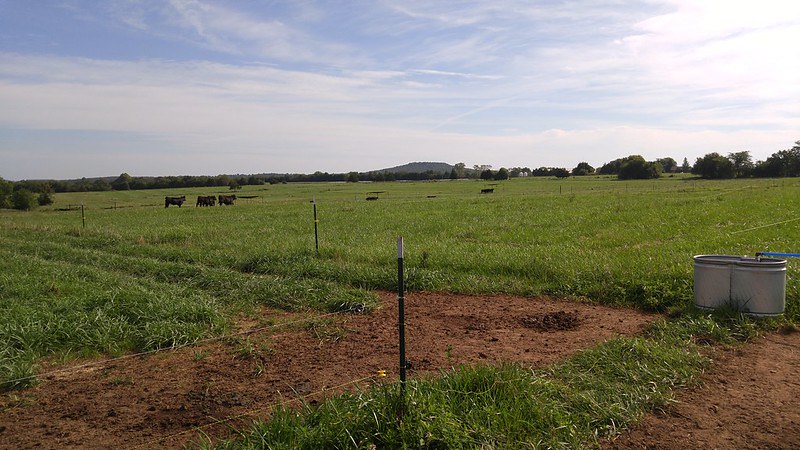Rotational grazing offers producers one way to extend the grazing season and reduce feed costs.
June 29, 2022

With inflation on the rise, many people are looking for creative ways to make the most of their financial resources. That is true for cattle ranchers as well, said Dustin Pendell, Kansas State University agricultural economist.
In a recent Cattle Chat podcast from K-State's Beef Cattle Institute, Pendell offered producers a few ways to make the most of their dollars.
"One strategy to manage around price inputs is participate in the futures and options markets," Pendell said, noting that these strategies offer investors the opportunity to make money or hedge on their investments.
He also encouraged producers to look at ways to reduce feed expenses. "Seventy percent of the variable costs on a cattle operation are related to feed expenses," he said, suggesting ranchers look at rotational grazing as a feed management option.
Beef cattle nutritionist Phillip Lancaster explained that with rotational grazing, cattle are moved from pasture to pasture frequently to allow the grass to recover and keep it from being over grazed.
"A good grazing management technique is to adjust the rotation based on the forage response to the current growing conditions and grazing pressure," Lancaster said.
He also said producers need to find the optimum stocking rate for their pastures. "There is a connection between stocking rate and productivity per cow and per acre, and it is important to find what that optimum stocking rate number is," Lancaster said.
Along with intensive grazing, he encouraged producers to use their feed resources strategically.
"Make sure you are only supplementing the cows that really need the extra nutrition and not the whole herd," Lancaster said.
In order to do that, producers may need to group the cows into smaller numbers, which involves additional labor.
When other expenses go up, producers may need to put more of their own "sweat equity" into the ranch to reduce the labor expense, said veterinarian Bob Larson.
"It is time to rethink how we use all our resources, including the labor expense. The investment in labor might be less than what I've got in fuel, for example," Larson said.
The experts agree that reducing expenses is one way to manage in a time of increasing inputs. Veterinarian Brad White said producers might also look for ways to increase revenue.
"This might be a good time to look at alternative marketing strategies," White said. "Get out your spreadsheet and see if hitting a different marketing window will be cost efficient."
For region-specific tips, Lancaster recommended reaching out to a local county Extension agent or an area veterinarian.
Source: Kansas State University Research and Extension, which is solely responsible for the information provided, and wholly owns the information. Informa Business Media and all its subsidiaries are not responsible for any of the content contained in this information asset.
You May Also Like



